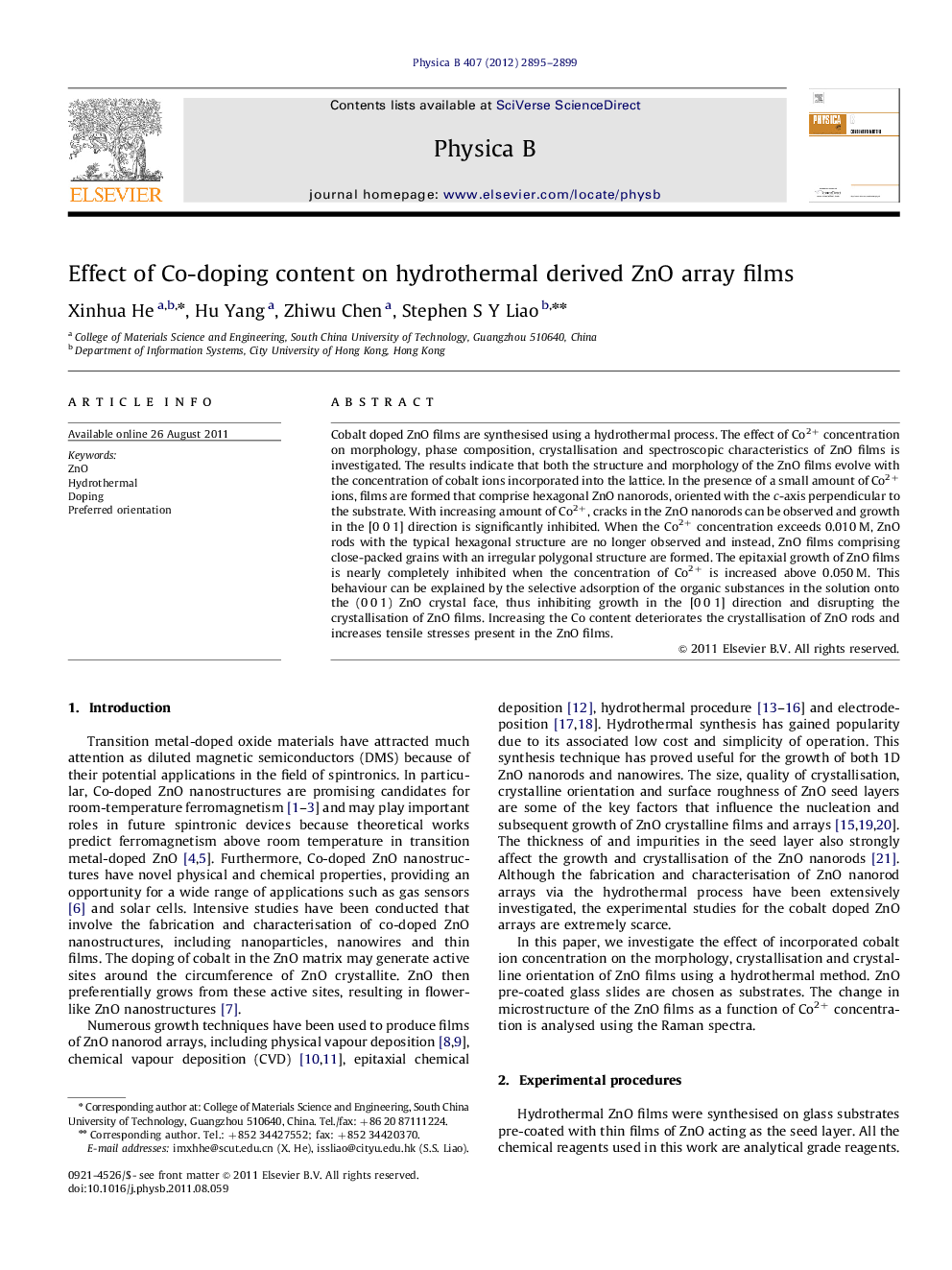| Article ID | Journal | Published Year | Pages | File Type |
|---|---|---|---|---|
| 1810659 | Physica B: Condensed Matter | 2012 | 5 Pages |
Cobalt doped ZnO films are synthesised using a hydrothermal process. The effect of Co2+ concentration on morphology, phase composition, crystallisation and spectroscopic characteristics of ZnO films is investigated. The results indicate that both the structure and morphology of the ZnO films evolve with the concentration of cobalt ions incorporated into the lattice. In the presence of a small amount of Co2+ ions, films are formed that comprise hexagonal ZnO nanorods, oriented with the c-axis perpendicular to the substrate. With increasing amount of Co2+, cracks in the ZnO nanorods can be observed and growth in the [0 0 1] direction is significantly inhibited. When the Co2+ concentration exceeds 0.010 M, ZnO rods with the typical hexagonal structure are no longer observed and instead, ZnO films comprising close-packed grains with an irregular polygonal structure are formed. The epitaxial growth of ZnO films is nearly completely inhibited when the concentration of Co2+ is increased above 0.050 M. This behaviour can be explained by the selective adsorption of the organic substances in the solution onto the (0 0 1) ZnO crystal face, thus inhibiting growth in the [0 0 1] direction and disrupting the crystallisation of ZnO films. Increasing the Co content deteriorates the crystallisation of ZnO rods and increases tensile stresses present in the ZnO films.
